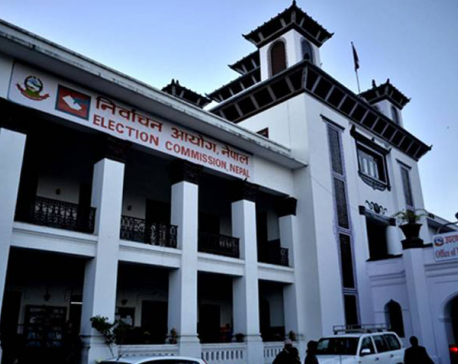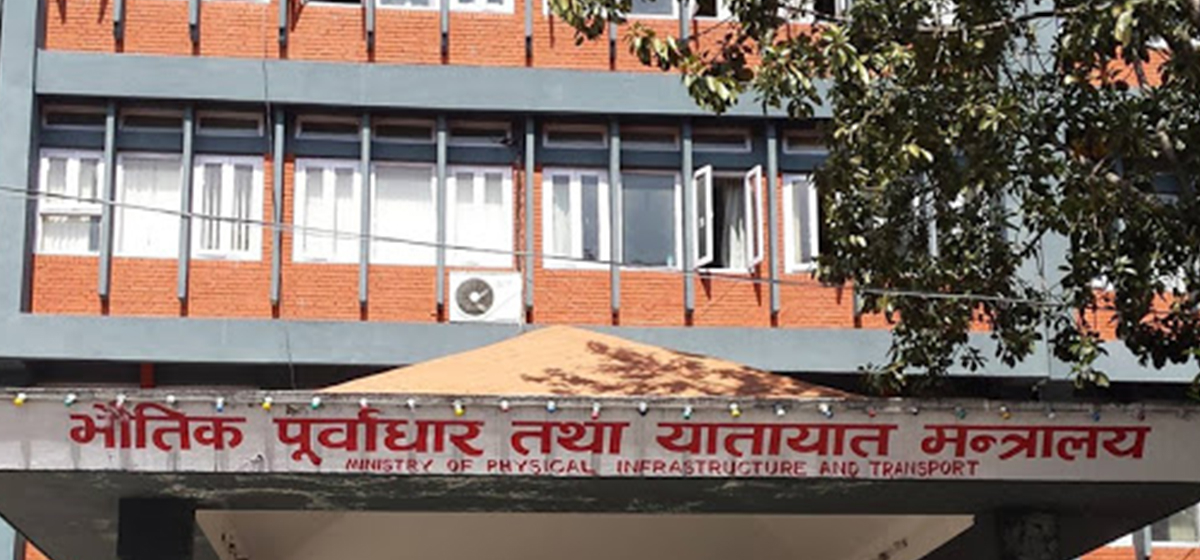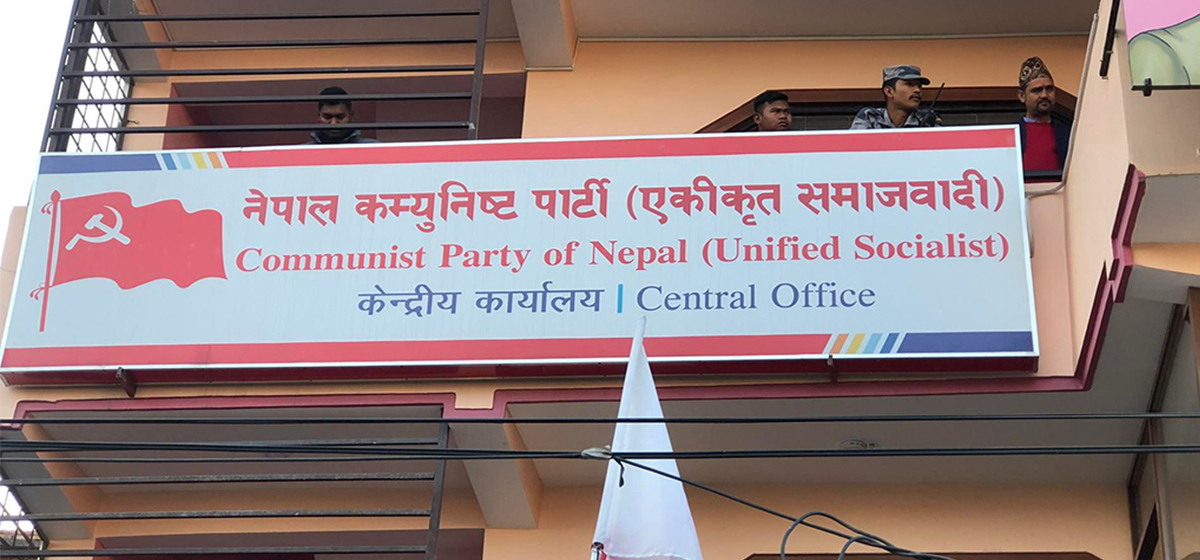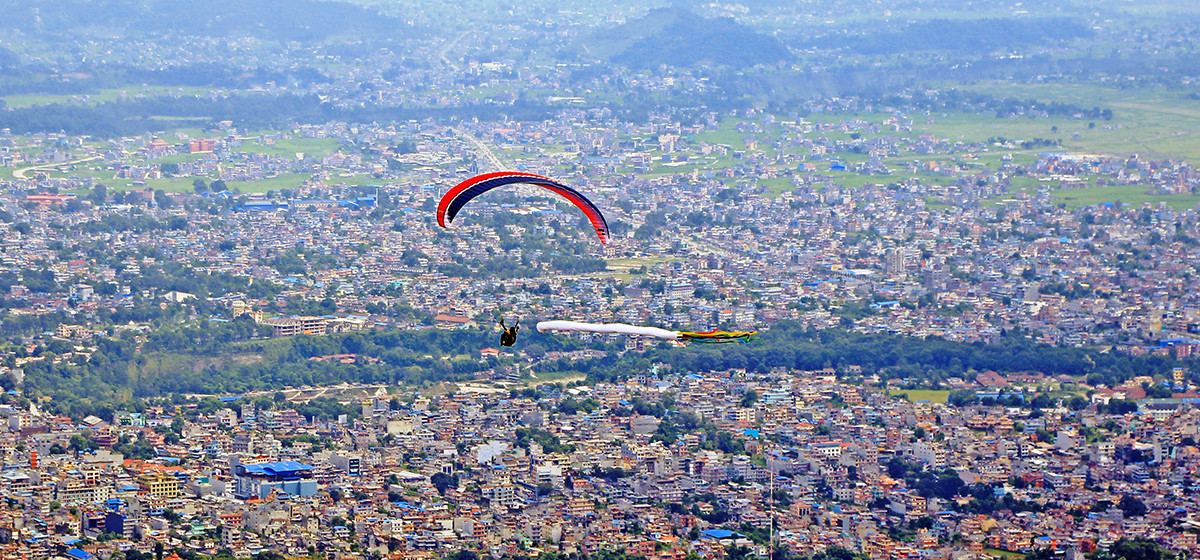
OR
Another milestone : Election nomination day
Published On: October 23, 2017 07:13 AM NPT By: Republica | @RepublicaNepal
Even on the day of the filing of nominations for FPTP seats for the November 26 elections many people are far from convinced that the two-phase elections will actually take place on the scheduled dates, first on November 26 and then on December 7.
This is largely because of the last-minute electoral alliance, with an eventual merger on the cards, between CPN-UML—the second largest party in the recent parliament—and CPN (Maoist Center)—the third largest.
Apparently Nepali Congress, badly shaken by the left unity, has been working in cahoots with foreign actors to postpone elections in order to dilute the influence of the combined left front. But whatever the veracity of allegations of such collusion, putting off elections, much less cancelling it altogether, is not an easy task so late in the game.
With the filing of nominations for the first phase of federal and provincial elections on Sunday, this prospect appears even more remote. Elections tend to have a momentum of their own. If our worst fears do not materialize, and these elections do take place as scheduled, they will represent a watershed moment in the political history of Nepal.
They will be the strongest possible sign of the long-term viability of the new constitution. They will also mark the country’s formal entry into the federal republican era. For the first time in the country’s history there will be different provinces—each of the seven crafted on the basis of population and geography— each with its own government.
This in turn will represent the realization of the old dream of decentralization of power and resources—the dream that was first expressed in 1951 when King Tribhuvan was restored to the throne following a compromise between political parties and the Rana regime.
The new government that was formed after this compromise was to hold an election to the Constituent Assembly based on adult franchise. It wasn’t meant to be. When an election was finally held in 1959, it was for a Westminster-style parliament, not a sovereign Constituent Assembly.
Moreover, the new BP Koirala government that was formed after the election was dissolved by King Mahendra in a coup after only 19 months in office. This concept of Constituent Assembly that had entered the political lexicon back in 1951 would come into being only in 2008, following the overthrow of the autocratic Shah monarchy. Yet it was only in 2015 that a sovereign CA was finally able to write a new charter.
This long journey of the Constituent Assembly would have been incomplete without the holding of the provincial and federal elections. Now that these elections are being held, they will imbue Nepalis with new hope that the era of protracted political transition, and unstable politics that came with it, will finally end. For only then will the country be able to march ahead on the common path of prosperity and social justice envisioned by the new constitution.
Our new constitution and electoral laws have enough provisions to ensure a semblance of stability. It is now up to our political actors to prove that they are capable of working in public interest, both during and after the twin elections.
You May Like This

EC prohibits use of cap, T-shirt, bags bearing election symbol in election
KATHMANDU, Oct 22: The Election Commission has prohibited the production, distribution and use of cap, sticker, t-shirt, bag and shawl... Read More...

Bringing budget in between election will be against election code:EC
KATHMANDU, April 29: The Election Commission on Saturday has drawn the attention of the government stating that bringing an annual... Read More...

Election Commission presses for election laws
KATHMANDU, Jan 18 : Chief Election Commissioner Dr Ayodhi Prasad Yadav has said that there was no possibility of holding elections... Read More...





Just In
- EC seeks cooperation for free and fair by-election
- Bus carrying wedding procession attendees meets with accident in Sindhupalchowk claiming three live
- CPN (Unified Socialist) to hold its Central Committee meeting on May 10-11
- Over 16,000 paragliding flights conducted in one year in Pokhara
- MoPIT prepares draft of National Road Safety Act, proposes rescue within an hour of an accident
- Light rainfall likely in hilly areas of Koshi, Bagmati, Gandaki and Karnali provinces
- Customs revenue collection surpasses target at Tatopani border, Falls behind at Rasuwagadhi border in Q3
- Rain shocks: On the monsoon in 2024














Leave A Comment